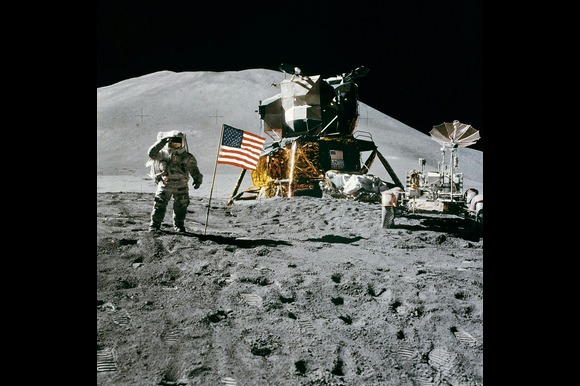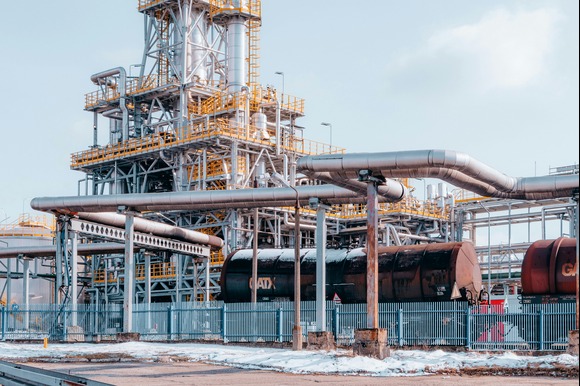
Photo by Pixabay
The United States space agency NASA is expediting its plans to deploy a nuclear reactor on the Moon by the year 2030, according to recent reports in US media. This initiative forms a key part of the US government’s long-term strategy to establish a permanent human presence on the lunar surface.
Citing a report by Politico, the agency’s acting administrator recently emphasized that both China and Russia have announced similar ambitions, and warned they may attempt to stake out territory on the Moon by declaring “keep-out zones.” These geopolitical concerns are reportedly driving the US to act swiftly, despite skepticism about the feasibility of the proposed timeline and increasing financial constraints.
The urgency was echoed in a directive by US Transport Secretary Sean Duffy, who was appointed interim head of NASA by President Donald Trump. Writing to the agency, Duffy underlined the strategic importance of advancing nuclear technology in space to power future lunar industries, enable deep space exploration, and safeguard national interests beyond Earth.
“To properly advance this critical technology to be able to support a future lunar economy, high power energy generation on Mars, and to strengthen our national security in space, it is imperative the agency move quickly,” Duffy wrote, according to The New York Times. He called for proposals from private companies to construct a nuclear reactor capable of producing a minimum of 100 kilowatts of power—roughly equivalent to what 30 average US homes consume, but still far less than a typical land-based wind turbine, which generates between 2 to 3 megawatts.
The idea of using nuclear power on the Moon is not new. In 2022, NASA awarded three $5 million contracts to companies for preliminary designs of lunar reactors. The plan gained further urgency in May this year when China and Russia revealed their own goal to deploy an automated nuclear power station on the Moon by 2035.
A major challenge with solar power on the Moon is its extreme day-night cycle. One lunar day equals about four Earth weeks—two weeks of constant daylight followed by two weeks of complete darkness. This makes solar panels unreliable as a sole energy source, especially for sustaining long-term human activity.
“To support even a basic lunar habitat for a small crew, you need megawatt-level power generation. Solar and battery systems alone simply can’t deliver that consistently,” explained Dr. Sungwoo Lim, a senior lecturer in space systems at the University of Surrey. “Nuclear energy is not just desirable—it’s inevitable.”
Dr. Lionel Wilson, professor of Earth and Planetary Sciences at Lancaster University, also believes the 2030 target is technically attainable—provided there’s enough funding and a sufficient number of Artemis missions to ferry necessary components to the Moon. NASA’s Artemis program aims to return humans to the lunar surface and establish infrastructure, but it has been plagued by delays and funding uncertainty.
However, deploying nuclear technology in space raises significant safety concerns. “Launching radioactive material through Earth’s atmosphere is always risky,” noted Dr. Simeon Barber, a planetary science expert at the Open University. “A special license is required, but the challenges are manageable.”
NASA’s renewed focus on lunar nuclear power comes in the wake of budgetary turmoil. The Trump administration recently proposed a 24% cut to NASA’s 2026 budget, jeopardizing several high-profile missions, including the Mars Sample Return mission designed to bring back Martian soil to Earth. Many in the scientific community worry that the Moon reactor plan reflects political motives more than scientific or exploratory goals.
Dr. Barber expressed concern about a return to Cold War-era rivalry in space. “We appear to be revisiting the competitive mindset of the original space race. From a scientific standpoint, it’s both disappointing and worrying,” he said. While competition can spur innovation, Barber warned that an overemphasis on national dominance could detract from the broader objective of peaceful space exploration.
The notion of lunar “keep-out zones” mentioned by Secretary Duffy is tied to the Artemis Accords—an international agreement introduced in 2020 and signed by multiple countries, including the US. The accords advocate for peaceful cooperation and transparency in lunar activities. One key principle involves establishing safety zones around lunar operations to prevent interference, which some interpret as de facto territorial claims.
“If you place a nuclear reactor or any facility on the Moon, you can argue that a safety buffer is needed around it. That can look a lot like staking a claim to part of the Moon,” Barber said.
Nonetheless, the timeline faces logistical hurdles. Artemis 3, NASA’s next planned mission to land humans on the Moon, is scheduled for 2027, but its progress remains uncertain due to financial and technical setbacks. Until these issues are resolved, the idea of a fully functioning lunar base powered by nuclear energy remains speculative.
“You might have nuclear power ready, but if you can’t reliably transport people and hardware to the Moon, the reactor won’t serve much purpose,” Barber added. “Right now, the plans don’t seem well-coordinated.”
As global powers including China, Russia, India, Japan, and the US race to establish a permanent presence on the Moon, the growing focus on nuclear energy signals a new chapter in space development—one driven by both scientific ambition and geopolitical rivalry.




